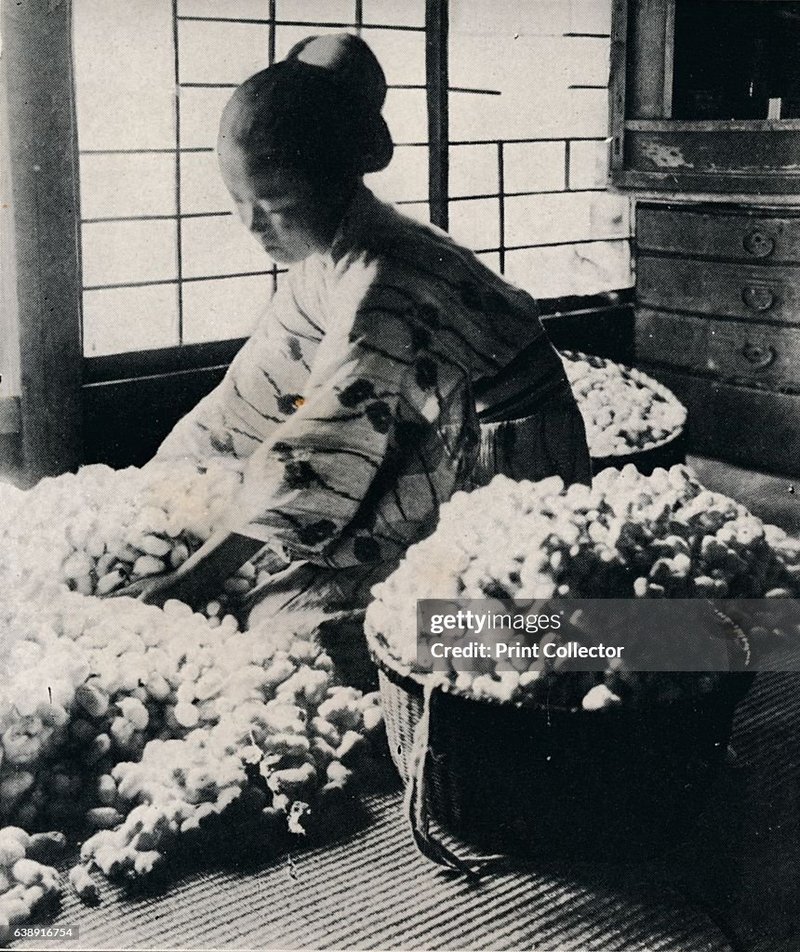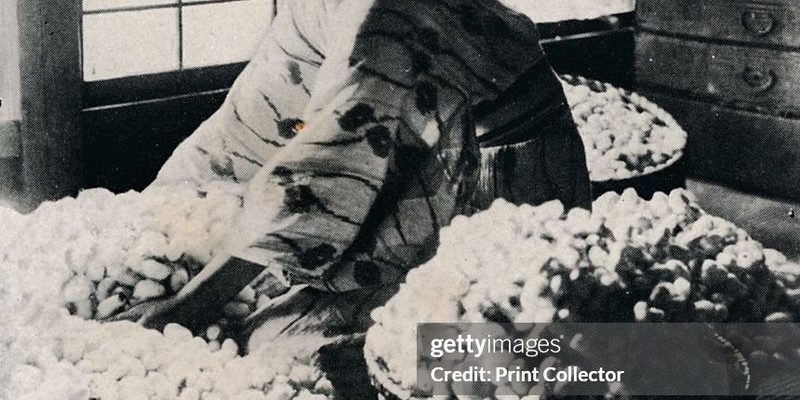
Silk production dates back thousands of years, intertwining with human civilization in fascinating ways. From its humble beginnings in ancient China to becoming a global industry, the journey of silk is as rich and intriguing as the fabric itself. Let’s dive into this captivating history, exploring the evolution of silk production and the role of silkworms in creating this luxurious material.
The Origins of Silk Production
Silk production started in ancient China, with roots tracing back to around 2700 BC. According to legend, Empress Leizu discovered silk when a cocoon fell into her tea. As the story goes, she noticed the fibers unraveling and realized their potential. This moment sparked the beginning of sericulture, the practice of raising silkworms for silk.
In those early days, silk was a closely guarded secret, and only the royal family had the privilege to wear it. The Chinese were so protective of their silk production methods that they imposed severe penalties on anyone caught smuggling silkworms or their eggs. Imagine living in a world where such a beautiful fabric was worth its weight in gold! The allure of silk became a symbol of wealth and prestige, leading to a bustling trade.
Over time, silk production spread beyond China. As trade routes expanded, especially along the Silk Road, the secrets of silk began to leak out. This ancient network of trade routes linked the East and West, enabling cultural exchanges and the sharing of ideas. The demand for silk grew exponentially, and soon, it became a coveted item in various regions, from Persia to Rome.
The Life Cycle of the Silkworm
To understand silk production, we need to delve into the fascinating life of the silkworm. The process starts with the *Bombyx mori*, the domesticated silkworm. These tiny creatures go through several stages in a cycle known as metamorphosis.
1. **Egg Stage**: The life of a silkworm begins as a tiny egg, about the size of a pinhead. After a few weeks, the eggs hatch into larvae, also known as caterpillars.
2. **Larval Stage**: During this phase, silkworms are voracious eaters, feasting primarily on mulberry leaves. They molt several times, growing rapidly until they are ready for the next phase.
3. **Cocoon Stage**: Once fully grown, the silkworm spins itself a protective cocoon made of silk fibers. This spinning process can take up to 72 hours. The silk thread can be as long as a mile!
4. **Pupal Stage**: Inside the cocoon, the silkworm transforms into a pupa. If left undisturbed, it will eventually emerge as a moth, but for silk production, the cocoons are collected before this happens.
This natural process is what makes silk so unique. The fragile beauty of the silk fabric comes from the hard work and transformation of the silkworm, making it a true marvel of nature.
The Silk Cultivation Process
Silk cultivation, or sericulture, is a meticulous process that requires care and attention. Here’s a closer look at how silk is produced:
1. **Breeding**: Silk production begins with carefully selecting healthy silkworm eggs. The silkworms are bred in controlled environments, ensuring they have the right conditions for growth.
2. **Feeding**: Once the eggs hatch, the larvae are fed a diet primarily consisting of fresh mulberry leaves. The quality of the leaves is crucial; healthy leaves lead to healthy silkworms.
3. **Cocoon Harvesting**: After about six weeks, when the silkworms are ready to spin their cocoons, they are carefully monitored. Once the cocoons are formed, they are harvested. This is a delicate process—harvesting too early or too late can affect the quality of the silk.
4. **Processing the Silk**: Once harvested, the cocoons are boiled to kill the pupae and help unravel the silk threads. The silk is then washed, dyed, and spun into usable thread.
This entire process requires a profound understanding of the silkworm’s life cycle and meticulous attention to detail. It’s not just about gathering silk; it’s about nurturing it from the very beginning.
The Evolution of Silk Fabric
As silk production spread, so did the ways people used this coveted material. Initially, silk was primarily used for clothing, especially among the elite. Over time, its versatility became apparent, and it started appearing in various forms.
– **Clothing**: As mentioned, silk garments were a symbol of wealth. They were often adorned with intricate patterns and designs, showcasing the artistry of the weavers.
– **Home Decor**: Silk also made its way into interiors. From curtains to upholstery, silk added a touch of elegance to homes.
– **Art and Culture**: Beyond fashion and decor, silk found a place in art. Painters and artisans often used silk as a canvas for their creations, combining the beauty of the fabric with artistic expression.
Silk’s evolution wasn’t just about expanding its uses—it also paved the way for innovations in textile production. The introduction of new weaving techniques allowed for more intricate designs and patterns, giving rise to a rich tapestry of cultural significance.
Silk in the Modern World
Today, silk production is a global industry, with countries like China, India, and Thailand leading the way. The methods have evolved, but the essence of sericulture remains the same. Modern technology has introduced new machinery and processes, making silk production more efficient while still honoring traditional practices.
– **Sustainable Practices**: There’s a growing emphasis on sustainability in silk production. Many producers are adopting eco-friendly practices, from organic mulberry farming to using natural dyes. This shift is crucial as consumers become more environmentally conscious.
– **Global Market**: In the global market, silk is still highly sought after. Designers and fashion houses continue to create stunning silk garments, ensuring that this luxurious fabric remains relevant.
– **Cultural Significance**: Silk is deeply woven into the cultural fabric of many societies—from traditional clothing to ceremonies. Its historical significance continues to influence modern fashion and art.
Silk has transitioned from an exclusive luxury to a widely available fabric, but its legacy as a symbol of beauty and craftsmanship endures.
Challenges Facing Silk Production
While the silk industry thrives, it faces several challenges. **Climate change** poses a significant threat to sericulture, affecting mulberry growth and silkworm health. Additionally, competition from synthetic fabrics has put pressure on silk producers. Here are some of the key challenges:
– **Environmental Factors**: Extreme weather conditions can disrupt the delicate balance needed for successful silk production. Changes in temperature and precipitation patterns can affect the cultivation of mulberry trees, which are essential for feeding silkworms.
– **Market Competition**: Synthetic materials often provide cheaper alternatives to silk. While silk is cherished for its quality, the lower price of synthetics means producers have to highlight the unique qualities of natural silk.
– **Labor Concerns**: Sericulture often relies on manual labor, which can lead to issues around labor rights and fair wages. Addressing these concerns is essential for the sustainability of the industry.
It’s crucial for the silk industry to adapt and innovate, ensuring that it can continue to thrive in a changing world.
The Future of Silk Production
Looking ahead, the future of silk production is bright but requires adaptation and innovation. With advancements in technology and a growing emphasis on sustainability, there are exciting possibilities for this ancient craft.
– **Innovation in Production**: New techniques in breeding, feeding, and processing silkworms promise to improve the efficiency and quality of silk production. Innovations such as vertical farming for mulberry trees could revolutionize the industry.
– **Sustainable Practices**: The push for environmentally friendly practices is not just a trend—it’s becoming a necessity. By adopting sustainable farming and production methods, the silk industry can meet consumer demands while preserving the environment.
– **Cultural Preservation**: As globalization continues, there’s an opportunity to celebrate and preserve the cultural significance of silk. By supporting local artisans and traditional practices, we can ensure that the rich history of silk production remains alive.
Silk production, with its blend of history, nature, and craftsmanship, has a promising future. By embracing change while honoring the past, this timeless fabric will continue to enchant generations to come.
In closing, the story of silk production through silkworms is much more than just about creating a luxurious fabric. It’s a testament to human ingenuity, the beauty of nature, and our enduring connection to the world around us. Whether you’re draping a silk scarf around your neck or admiring a piece of silk art, remember the incredible journey it took to get there.

